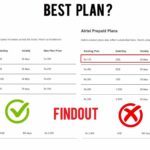Managing cash flow effectively is crucial for any business. Whether you’re a small business owner or managing multiple revenue streams, understanding how to use financial ratios, credit lines, and monitoring systems can make a significant difference. This guide will help you navigate these aspects with practical tips and strategies.

Key Takeaways
- Financial Ratios: Learn how to use financial ratios to keep your cash flow in check.
- Multiple Revenue Streams: Discover strategies to manage cash flow when you have various income sources.
- Small Business Plan: Create a solid cash flow management plan tailored for small businesses.
- Credit Lines: Understand how to effectively use credit lines to support cash flow.
- Monitoring Systems: Implement systems to keep a close watch on your cash flow.
How to Use Financial Ratios to Manage Cash Flow
Financial ratios are valuable tools for assessing the health of your business’s cash flow. Here’s how to use them effectively:
1. Understand Key Ratios
- Current Ratio: This ratio compares your current assets to current liabilities. A higher current ratio indicates a better ability to cover short-term obligations. Formula: Current Assets / Current Liabilities.
- Quick Ratio: Also known as the acid-test ratio, it excludes inventory from current assets. Formula: (Current Assets – Inventory) / Current Liabilities.
- Cash Conversion Cycle: This measures how long it takes to convert inventory and receivables into cash. Formula: Days Inventory Outstanding + Days Sales Outstanding – Days Payable Outstanding.
2. Monitor Regularly
Regularly track these ratios to ensure your cash flow remains healthy. Set benchmarks based on industry standards and historical performance to gauge how well your business is doing.
3. Analyze Trends
Look for trends in your financial ratios over time. Are your current and quick ratios declining? Is your cash conversion cycle increasing? Identifying trends early helps you address potential cash flow issues before they become critical.
4. Use Ratios to Make Decisions
Leverage these ratios to make informed decisions. For example, if your current ratio is low, you might need to adjust your inventory levels or improve your receivables collection process.
How to Manage Cash Flow with Multiple Revenue Streams
Managing cash flow becomes more complex when you have multiple revenue streams. Here’s how to handle it:
1. Track Revenue Separately
Keep detailed records of each revenue stream. Use accounting software to track income from different sources and analyze how each contributes to your overall cash flow.
2. Forecast Cash Flow for Each Stream
Create cash flow forecasts for each revenue stream. This helps you understand when you’ll receive income and when you might face shortfalls.
3. Prioritize Cash Flow Management
Allocate resources and manage expenses according to the performance of each revenue stream. Focus on the most profitable streams but don’t neglect others.
4. Monitor Performance Regularly
Regularly review the performance of each revenue stream. Adjust your strategies based on what’s working and what isn’t. This could involve tweaking marketing efforts or exploring new markets.
5. Balance Revenue and Expenses
Ensure your expenses are aligned with the revenue you’re generating. Avoid overspending in one area if it’s not producing the expected returns.
How to Develop a Cash Flow Management Plan for Small Businesses
Creating a solid cash flow management plan is essential for small business success. Here’s a step-by-step approach:
1. Create a Cash Flow Forecast
Start by forecasting your cash flow for the upcoming months. Include all expected income and expenses. A good forecast helps you anticipate cash shortfalls and plan accordingly.
2. Set Up a Budget
Develop a budget that aligns with your cash flow forecast. Include all fixed and variable costs and set spending limits to avoid overspending.
3. Manage Receivables and Payables
Implement strategies to manage receivables and payables effectively. Offer discounts for early payments to customers and negotiate longer payment terms with suppliers.
4. Maintain a Cash Reserve
Build and maintain a cash reserve to handle unexpected expenses or slow periods. Aim for at least three to six months of operating expenses as a buffer.
5. Review and Adjust Regularly
Regularly review your cash flow plan and adjust as needed. Keep an eye on changes in income, expenses, and market conditions to ensure your plan remains effective.
6. Seek Professional Advice
Consider working with a financial advisor or accountant to help you develop and manage your cash flow plan. They can provide valuable insights and recommendations.
How to Use Credit Lines to Manage Cash Flow
Credit lines can provide a safety net for managing cash flow. Here’s how to use them effectively:
1. Understand Different Types of Credit Lines
- Revolving Credit Lines: These allow you to borrow and repay funds repeatedly up to a certain limit. They’re useful for covering short-term cash flow needs.
- Term Loans: These provide a lump sum of money to be repaid over a fixed period. They’re suitable for larger expenses or investments.
2. Choose the Right Credit Line
Select a credit line that fits your business needs. Consider factors such as interest rates, repayment terms, and fees.
3. Use Credit Wisely
Avoid using credit lines for everyday expenses. Instead, use them for managing cash flow gaps or financing growth opportunities.
4. Monitor Your Credit Utilization
Keep track of your credit utilization ratio, which is the amount of credit you’re using compared to your total credit limit. High utilization can affect your credit score and increase interest rates.
5. Repay on Time
Make timely repayments to avoid penalties and maintain a good credit rating. Set up reminders or automate payments to ensure you don’t miss due dates.
How to Implement a Cash Flow Monitoring System
A cash flow monitoring system helps you keep a close eye on your finances. Here’s how to set one up:
1. Choose the Right Tools
Select cash flow management tools or software that suits your business size and needs. Options include QuickBooks, Xero, or custom Excel spreadsheets.
2. Set Up Real-Time Tracking
Implement systems that provide real-time tracking of your cash flow. This allows you to see up-to-date information on your income, expenses, and overall cash position.
3. Automate Alerts and Reports
Use your system to set up automated alerts for key metrics and generate regular reports. This helps you stay informed about your cash flow status and identify potential issues early.
4. Integrate with Other Systems
Integrate your cash flow monitoring system with other financial systems, such as accounting software and payment processors. This ensures all your data is synchronized and accurate.
5. Train Your Team
Ensure your team is trained to use the cash flow monitoring system effectively. Provide guidance on how to input data, interpret reports, and respond to alerts.
6. Review and Improve
Regularly review the effectiveness of your monitoring system and make improvements as needed. Stay updated on new features or tools that could enhance your cash flow management.
Conclusion
Managing cash flow is a vital aspect of running a successful business. By using financial ratios, managing multiple revenue streams, developing a cash flow plan, leveraging credit lines, and implementing a monitoring system, you can maintain a healthy cash flow and navigate financial challenges effectively. Stay proactive, make informed decisions, and continuously refine your strategies to ensure long-term success.













